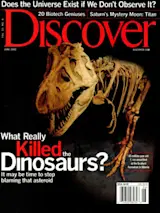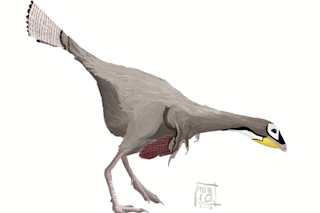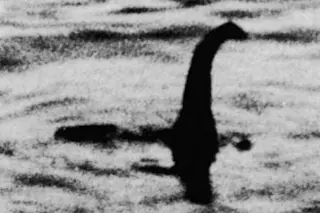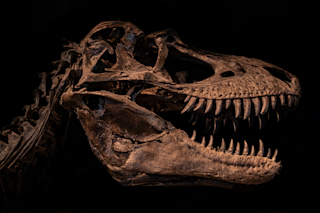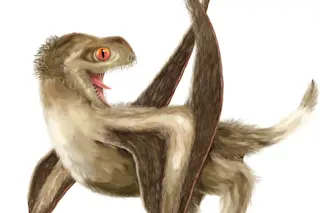Imagine the badlands of eastern Montana, a stark, heavily eroded landscape of steep-sided coulees, sandstone outcrops, and boulder-strewn washes. Vegetation is sparse, little more than sage, bunchgrass, scattered islands of scrub pine, and an occasional yucca plant. It's here, south of Fort Peck Reservoir, on a sunny spring afternoon, that you could find Jack Horner lying on his belly atop a barren hill in the Hell Creek Formation, one of the world's most famous dinosaur graveyards. The paleontologist is a big man, standing 6 feet 4 inches tall, but he might just as well be a boy again, chancing upon his first dinosaur fossil, so thoroughly absorbed is he in exploring the tiny objects only inches from his face. Horner is best known for finding large skeletons, nesting colonies, and vast bone beds where herds of dinosaurs died, and his dig here has turned up a number of outstanding specimens, ...
What Wiped Out the Dinosaurs?
New studies suggest that dramatic climate changes were killing off behemoths even before the asteroid impact
More on Discover
Stay Curious
SubscribeTo The Magazine
Save up to 40% off the cover price when you subscribe to Discover magazine.
Subscribe

